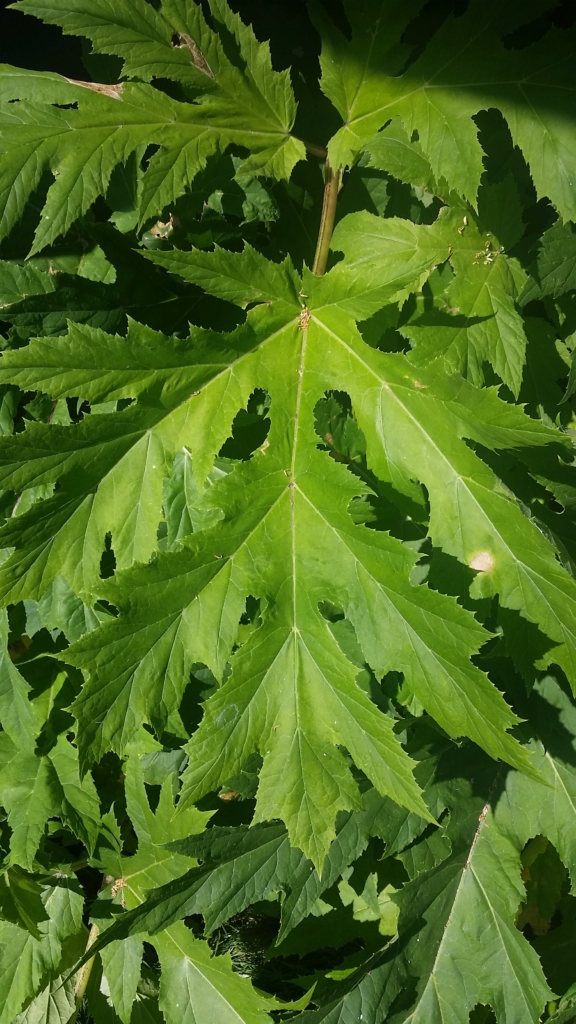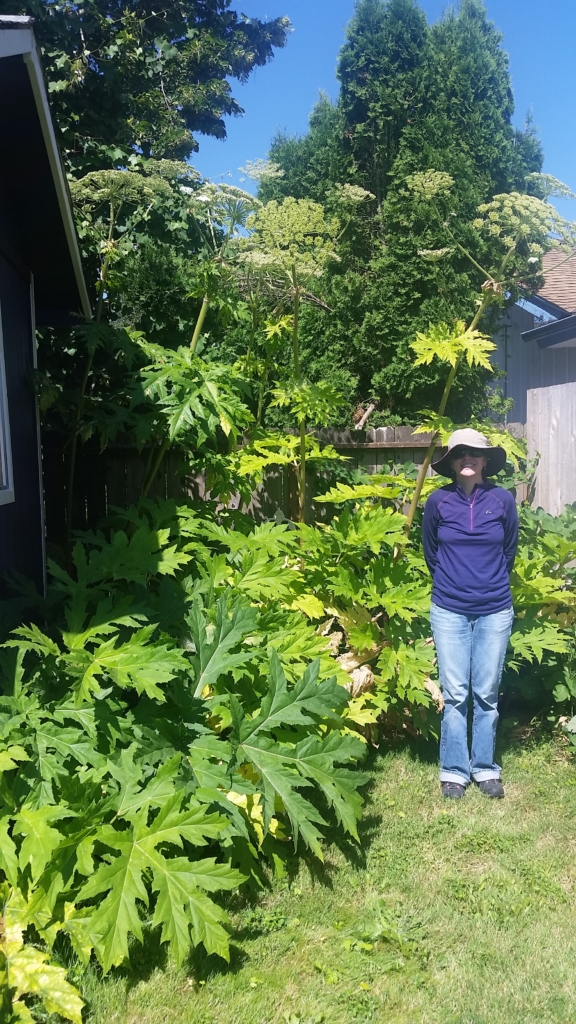Giant Hogweed
Heracleum mantegazzianum
Plant Description
Large, tall plant with large leaves and flower head. Flowering salk develops after 2-4 years. Stalks are hollow with purple blotches and sparse hairs. The flower head is a large umbrella-like cluster up to 2.5 feet in diameter. Leaves can be 3-5 feet wide and deeply lobed with pointed ends. PLANT SAP IS EXTREMELY TOXIC.
Plant Details
| Life Forms | |
|---|---|
| Habitats | |
| ODA Listing | |
| Soil and Moisture Conditions | |
| Suggested Actions | |
| Shade Preference | |
| Mature Height | 10-15' |
| Distribution | Washington, Oregon Alaska |
| Control | The plant is highly toxic and should only be controlled by a professional. Wear gloves and protective clothing, small plants can be pulled; herbicide is effective. |
| Disposal Methods | Bag all flower heads in sturdy garbage bags. If the plants are in seed, carefully cut off the seed head and place in a bag without dispersing the seeds. Dispose of flower heads and plants in household garbage or take to a transfer station for disposal. Do not compost or put in yard waste. Never dump plant material because weeds can spread from yard waste piles |
| Reproduction and Spread | Mid-May to July, produces 2-foot-wide umbrella-shaped clusters of small white flowers that go to seed in July. Reproduces by seed. |
| Introduced | 1917 from Caucus Mountains |
| Look Alikes | Cow parsnip resembles giant hogweed but is much smaller, lacks the red spots on the stems, and is far less dangerous. Giant hogweed stalks are mottled red like its close relative poison hemlock. Cow parsnip stems are solid green |
| Impact | Spreading by seed, giant hogweed has escaped into numerous backyards, ravines, parks, abandoned lots, Streams, woods, and roadsides. It can crowd out other plants and take over natural areas, especially in moist areas such as Streamsides. Somewhat shade tolerant, giant hogweed can also thrive in full sun and has been known to even invade healthy turf. A public health hazard, hogweed's clear, watery sap has toxins that cause photo-dermatitis. Skin contact followed by exposure to sunlight produces painful, burning blisters that may develop into purplish or blackened scars |
| More Info |
© Marion Soil and Water Conservation District. All Rights Reserved.


